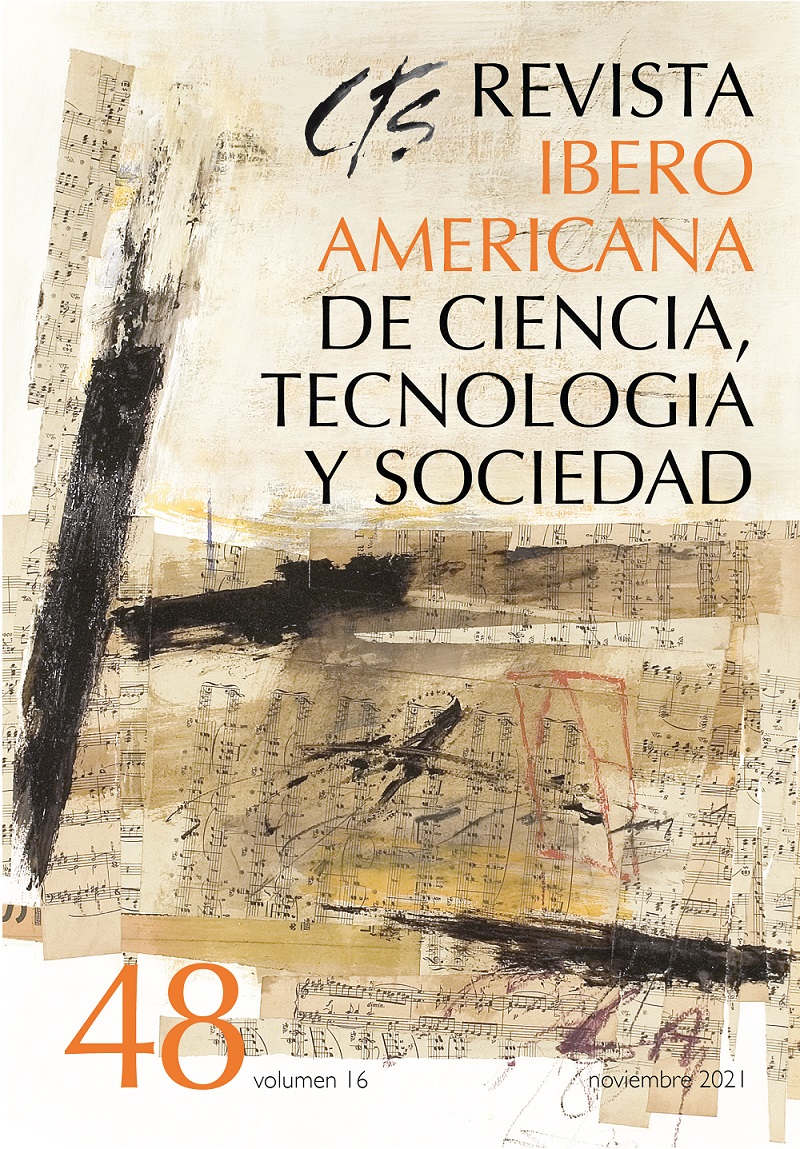The High-Level Technological Services (STAN) as Technology and Knowledge Transfer Resources for CONICET. Scopes and Limitations
Keywords:
technology transfer, science and technology systems, power device, researchersAbstract
In the last decade, technology transfer activities have been strongly promoted by the Argentine State, encouraging the creation of specific institutional areas that allow the academic sector to be articulated with production and government areas in order to formalize technology and social transfer. In this article we approach the conceptualization and operationalization of High-Level Technological Services (STAN, due to its initials in Spanish) as resources for the formalization of CONICET’s technology transfer activities. We surveyed the current institutional regulations, systematized the experiences acquired regarding technology transfer and made a series of arguments around contemporary debates on the relationships between science, technology and society. We conclude that STANs constitute a social construct and an active power device that sometimes limits the capacities, potentialities and territorial projections of technological and social transfer.Downloads
References
Corvalán, R. E. (2016). Vinculación y transferencia. Su significado y alcances. Extensionismo, innovación y transferencia tecnológica, Claves para el desarrollo, Vol. 3. Recuperado de: http://dx.doi.org/10.30972/eitt.302771.
Cuevas Badallo, A. y Urueña López, S. (2019). Públicos y actores en la democratización de la actividad científica. Revista Iberoamericana de Ciencia, Tecnología y Sociedad —CTS, 14(42), 9-29.
Dreyfus, A. (1998). Science, technologie et societé : un nouveau domaine d’enseignement? La lettre de I’OCIM, 58, 3-10.
Katzer, L. (2020). Políticas públicas y juventudes rurales e indígenas: una experiencia de etnografía colaborativa con el Municipio de Lavalle. Revista Argentina de Juventud, 14. Recuperado de: https://doi.org/10.24215/18524907e032.
Lundvall, B. A. (1992). National systems of innovation: Towards a theory of innovation and interactive learning. Londres: Pinter Publishers.
Nelson, R. R. (1993). National innovation systems: a comparative analysis. Nueva York: Oxford University Press on Demand.
Molas Gallart, J., Castro Martínez, E., y Fernández De Lucio, I. (2008). Interface Structures: Knowledge Transfer Practice In Changing Environments. INGENIO (CSIC-UPV) Working Papers Series, 2008-4.
Malizia, A. I., Sánchez-Barrioluengo, M., Lombera, G. y Castro-Martínez, E. (2013). Análisis de los Mecanismos de Transferencia Tecnológica entre los Sectores Científico-tecnológico y Productivo de Argentina. Journal of Technology Management & Innovation, 8(4), 103-115.
Fernández De Lucio, I., Castro Martínez, E., Conesa Cegarra, F. y Gutiérrez Gracia, A. (2000). Una visión crítica de las relaciones universidad-empresa: el papel de las estructuras de interrelación. En Fundación Empresa Universidad de Granada (Ed.), La universidad y la empresa: claves para una relación innovadora.
Trench, B. (2008). Towards an analytical framework of science communication models. En J. Metcalfe, D. Cheng y S. Shi (Eds.), Communicating science in social contexts, Springer (119-135).
Valero Matas, J. A. (2006). Responsabilidad social de la actividad científica. Revista Internacional de Sociología, LXIV(43), 219-242.
Vryzas, K. y Tsitouridou M. (2011). Technologie, culture et éducation. Synergies Sud-Est européen, 3, 15-34.
Ziman, J. (2003). Ciencia y sociedad civil. Segoría, 28, 5-17.
Downloads
Published
How to Cite
Issue
Section
License
All CTS's issues and academic articles are under a CC-BY license.
Since 2007, CTS has provided open and free access to all its contents, including the complete archive of its quarterly edition and the different products presented in its electronic platform. This decision is based on the belief that offering free access to published materials helps to build a greater and better exchange of knowledge.
In turn, for the quarterly edition, CTS allows institutional and thematic repositories, as well as personal web pages, to self-archive articles in their post-print or editorial version, immediately after the publication of the final version of each issue and under the condition that a link to the original source will be incorporated into the self-archive.











